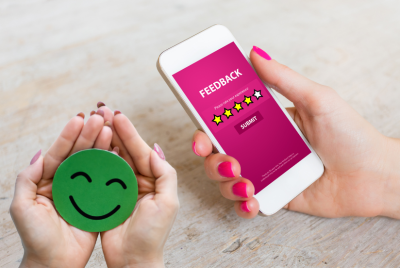Streamlining Client Onboarding: How Automation Can Simplify the Process
I have witnessed the transformative power of streamlining client onboarding processes. The initial stages of onboarding are critical for setting the tone of the client relationship and ensuring a smooth transition into working together. However, traditional manual onboarding methods often lead to inefficiencies, delays, and missed opportunities. In this article, I will explore how automation can simplify the client onboarding process, offering practical suggestions and reasons for adopting automated strategies.
Challenges in Client Onboarding
Client onboarding is a complex process that involves gathering information, completing paperwork, and establishing clear lines of communication. However, many organizations face common challenges that hinder the efficiency of this crucial stage. Manual data entry, fragmented systems, and a lack of standardized processes often result in time-consuming and error-prone onboarding experiences. These challenges can lead to frustrated clients, missed deadlines, and lost business opportunities.
The Role of Automation in Client Onboarding
Automation offers a solution to the challenges faced during client onboarding. By leveraging technology and streamlined workflows, organizations can simplify and accelerate the onboarding process. Automation tools and software enable the seamless integration of data, eliminate repetitive manual tasks, and provide real-time visibility into the progress of onboarding activities. This not only saves time but also enhances accuracy, reduces errors, and improves overall client satisfaction.
Implementing Automation in Client Onboarding
To successfully implement automation in the onboarding process, organizations need to follow a systematic approach. First, it is crucial to identify the specific areas where automation can bring the most significant benefits, such as data collection, document management, or client communication. Once these areas are identified, selecting the right automation tools becomes paramount. Organizations should choose tools that align with their specific needs, integrate well with existing systems, and provide robust security measures.
Creating an Efficient Client Onboarding Funnel
A client onboarding funnel acts as a framework to guide clients through the onboarding process in a structured and efficient manner. It consists of different stages that map out the client’s journey from initial contact to becoming an engaged and satisfied customer. The funnel typically includes stages such as prospecting, qualification, application, review, and activation. By breaking down the onboarding process into manageable steps, organizations can ensure a consistent and personalized experience for each client.
Personalization and Customization in Client Onboarding
One-size-fits-all approaches no longer suffice in today’s competitive business landscape. Personalization and customization are key to delivering an exceptional onboarding experience. By understanding each client’s unique needs, preferences, and pain points, organizations can tailor the onboarding process accordingly. Personalized welcome messages, customized onboarding packages, and individualized guidance can make clients feel valued, increase their engagement, and foster long-term loyalty.
Enhancing Communication and Collaboration
Clear and effective communication is vital during the onboarding process. Automation tools can facilitate seamless communication between different stakeholders, such as clients, account managers, and support teams. Automated email sequences, chatbots, and collaborative project management tools enable real-time updates, prompt responses, and easy access to information. Improved communication and collaboration not only enhance the onboarding experience but also lay the foundation for long-term relationships.
Ensuring a Smooth Transition and Follow-Up
Client onboarding is not a standalone process but a bridge to ongoing engagement. It is crucial to ensure a smooth transition from the onboarding phase to the next stages of the client journey. This involves providing clear guidance on the next steps, introducing clients to the appropriate account managers or service teams, and maintaining open lines of communication. Regular follow-up activities, such as check-ins, surveys, and feedback sessions, can help address any concerns, solidify relationships, and continuously improve the onboarding process.
Overcoming Resistance to Automation
Despite the numerous benefits of automation, organizations may encounter resistance when introducing these changes. Common concerns include fears of job displacement, learning new systems, or the perceived loss of personal touch. To address these concerns, organizations should emphasize the value that automation brings, such as improved efficiency, reduced errors, and enhanced client experiences. Providing training and support to employees, involving them in the automation implementation process, and highlighting success stories can help alleviate resistance and foster a culture of innovation.
Measuring and Optimizing the Onboarding Process
To ensure continuous improvement, it is essential to measure and analyze the effectiveness of the onboarding process. Key metrics to track may include onboarding time, client satisfaction ratings, conversion rates, and retention rates. By leveraging data analysis and feedback from clients and internal teams, organizations can identify bottlenecks, optimize workflows, and refine the onboarding experience. Regular monitoring and iteration are essential to keep the onboarding process aligned with evolving client expectations and business goals.
Security and Data Privacy Considerations
As organizations embrace automation, it is crucial to prioritize data security and privacy. Client onboarding involves the exchange of sensitive information, and any breaches can lead to severe consequences. Implementing robust security measures, such as encryption, secure cloud storage, and access controls, is vital to safeguarding client data. Compliance with relevant regulations, such as GDPR or CCPA, should also be a priority. Demonstrating a commitment to data security and privacy can build trust with clients and differentiate organizations from competitors.
Conclusion
Streamlining client onboarding through automation is a game-changer for businesses seeking to improve efficiency, enhance client experiences, and drive growth. By identifying challenges, implementing automation tools, creating a structured onboarding funnel, personalizing the process, and prioritizing communication and collaboration, organizations can simplify and accelerate onboarding while maintaining a human touch. Overcoming resistance, measuring performance, ensuring data security, and learning from success stories are crucial steps in this journey. Embracing automation in client onboarding is not just about simplifying processes; it is about laying the foundation for lasting client relationships and setting the stage for continued success.
FAQs
FAQ 1: Can automation completely replace human interaction during client onboarding?
No, automation should augment human interaction, not replace it. While automation streamlines and expedites processes, personalized human touch is still crucial for building trust and addressing specific client needs.
FAQ 2: How can automation improve data accuracy during the onboarding process?
Automation minimizes manual data entry and reduces the risk of human errors. By integrating systems and automating data collection, organizations can ensure accurate and up-to-date information throughout the onboarding journey.
FAQ 3: What if clients have unique onboarding requirements that don’t fit into a standardized process?
While standardization is beneficial, flexibility is also essential. Automation tools can be customized to accommodate unique client requirements, allowing organizations to deliver personalized onboarding experiences.
FAQ 4: How can automation contribute to scalability in client onboarding?
Automation enables organizations to handle increased volumes of clients without compromising quality or efficiency. By automating repetitive tasks, teams can focus on higher-value activities and accommodate growth.
FAQ 5: Is automation only suitable for large organizations, or can small businesses benefit as well?
Automation is beneficial for organizations of all sizes. Small businesses can leverage automation tools tailored to their needs and budget, enhancing their onboarding processes and competing effectively in the market.




